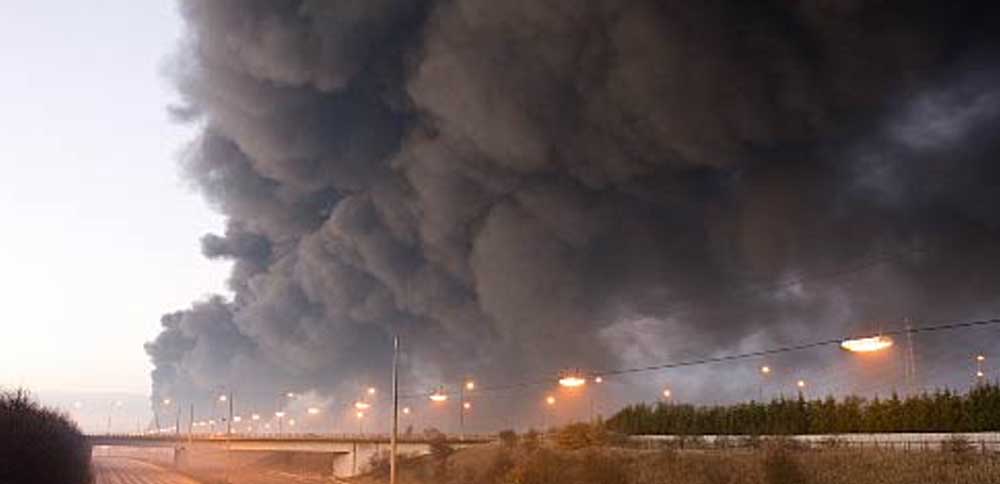Explosion pressure shock resistant design at transition from deflagration to detonation.
dashboard Objectives
The aim of the SafeDDT research project is the simulation-based assessment of plant components such as vessels, pipelines and fittings that are at risk of being exposed to a gas explosion.
Numerical simulations are used to predict the permanent deformation of the plant components. Supplemented by a methodical approach, a conservative explosion pressure shock resistant design is ensured in order to shorten development times and reduce the number of experiments required. The more accurate sizing enables a less conservative design than with the current state of the art. In the future, it will be possible to perform mathematical explosion-proof verifications for plant components without having to carry out time-consuming and costly experiments.
Understanding the phenomenon of DDT, developing numerical methods, safe design, increasing plant efficiency – that is SafeDDT!
Illustration: Gas explosion in a vessel with connecting pipe.
dashboard MILESTONES
Literature in standards and science
Development of numerical models
Conservative design method
Validation of the design method
dashboard Overview
Improved explosion pressure shock resistant design based on numerical simulations
Load case: gas explosions with DDT, unstable and stable detonation
Evaluation and consideration of permanent deformations
dashboard Motivation
Scenarios with DDT, the transition from deflagration to detonation, are critical for explosions of premixed gases and are decisive for the design of hazardous plant components. The operating pressure to be realised in the plant and the necessary wall thicknesses depend on this. If the output of a plant increases with a higher operating pressure, this is limited by a design that is usually too conservative according to the state of the art, since experimental verification is always required and the maximum explosion pressure also increases with a higher operating pressure. Experimental verifications are only possible to a limited extent due to the high effort involved, as a suitable test rig must be available and prototypes of the plant components must be manufactured.
There are no national or international standards or guidelines that allow a calculated design against gas explosions with DDT. The standard DIN EN 14460 – Explosion-proof equipment (as of April 2018) explicitly mentions that it only applies to deflagrations and not to detonations. A simulation-based assessment has the potential to better evaluate gas explosions with DDT.
ashboard PUBLICATIONS
Müller, M., Bernhardi, O. E., Denecke, J., Schildberg, H. P., Schmidt, J.:
Analysis of Plastic Deformation of Pipes Due to Deflagration to Detonation Transition Using Static Equivalent Pressure, Pressure Vessels and Piping Conference (PVP), American Society of Mechanical Engineers, Las Vegas, 17-22 July 2022, DOI: https://doi.org/10.1115/PVP2022-84790.
PROJECT LEAD:
STAFF | CONTACT:
person Matthias Müller, M.Sc.
email Send email
phone +49 721 6699 4780
FOCUS AREAS:
More projects
RiIM – Risk-based Pipeline Integrity Management
Developing an AI-powered, risk-based pipeline integrity management system.
SISProof – Safety Instrumented System Proof
Development of soft sensors for SIS monitoring and evaluation of limiting factors.
EuroValve – European Program on Evaluation of Safety Valve Stability
Development of a new safety criterion for safety valves.
Cover photo source "Tube Geometry", RiIM project: Harald Hoyer from Schwerin, Germany, CC BY-SA 2.0, via Wikimedia Commons
Cover photo source "Winstainforth", SafeDDT project, CC BY-SA 3.0, via Wikimedia Commons




